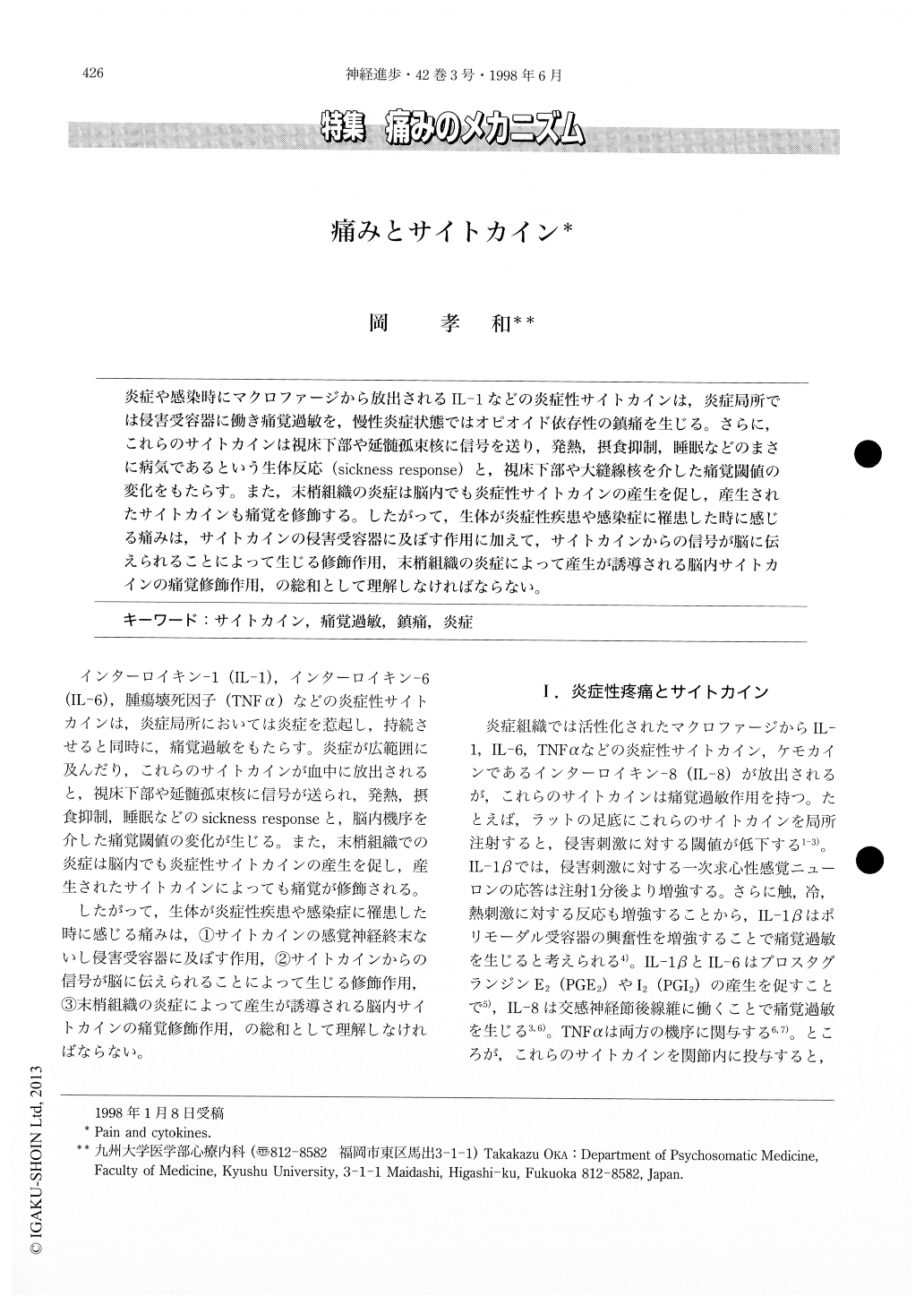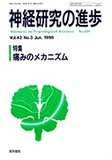Japanese
English
- 有料閲覧
- Abstract 文献概要
- 1ページ目 Look Inside
炎症や感染時にマクロファージから放出されるIL-1などの炎症性サイトカインは,炎症局所では侵害受容器に働き痛覚過敏を,慢性炎症状態ではオピオイド依存性の鎮痛を生じる。さらに,これらのサイトカインは視床下部や延髄孤束核に信号を送り,発熱,摂食抑制,睡眠などのまさに病気であるという生体反応(sickness response)と,視床下部や大縫線核を介した痛覚閾値の変化をもたらす。また,末梢組織の炎症は脳内でも炎症性サイトカインの産生を促し,産生されたサイトカインも痛覚を修飾する。したがって,生体が炎症性疾患や感染症に罹患した時に感じる痛みは,サイトカインの侵害受容器に及ぼす作用に加えて,サイトカインからの信号が脳に伝えられることによって生じる修飾作用,末梢組織の炎症によって産生が誘導される脳内サイトカインの痛覚修飾作用,の総和として理解しなければならない。
In peripheral tissue, proinflammatory cytokines such as interleukin-1 (IL-1), interleukin-6 and tumor necrosis factor- a are released from activated macrophages and induce hyperalgesia. However, IL-1 induces opioid-dependent analgesia in the fully inflamed tissue. Besides the modulatory effects of cytokines on nociception at the level of nociceptors, these cytokines signal the brain, e. g., the hypothalamus or the nucleus tractus solitarius, and then modulate nociception as well as producing sickness response such as fever, sleep or decreased food intake and water intake.

Copyright © 1998, Igaku-Shoin Ltd. All rights reserved.


